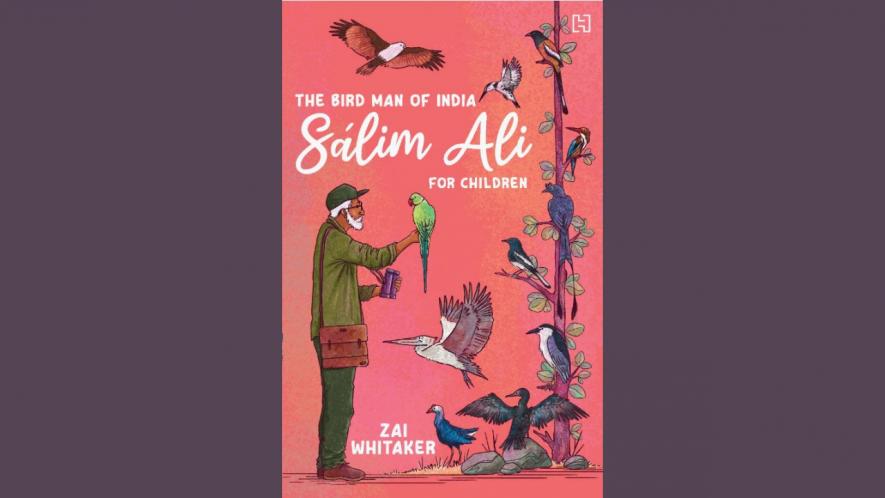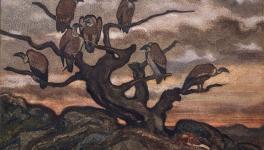Sálim Ali for Children

Image courtesy Hachette India, 2023
Sálim Ali, or Sálim Bhai as he was called, was one of the foremost ornithologists in the world. Called the Birdman of India, his life was as extraordinary as his work.
Sálim Ali for Children: The Bird Man of India (Hachette India, 2023) by Zai Whitaker brings to life the story of this brilliant man who has left behind a lasting legacy. The book traces the bird scientists life and work in India, Burma and Europe.
The following is an excerpt from the book.
Now we can start calling him Sálim Bhai, as he was widely known. He is getting too learned and too important to be called just ‘Sálim’. In a short time, he would stop being a Mr and become Dr Sálim Ali, because Bombay University awarded him an honorary doctorate. This was a rare honour, given after much thought and many meetings, to very exceptional students in a particular field of learning.
By the time of his death, Dr Sálim Ali was one of the Great Indians, a national hero. In many ways he was like another of our Greats, Mahatma Gandhi. Both Gandhiji and Sálim Ali were dedicated to, and lived for, an important cause. Gandhiji’s was freedom for India, and Sálim Bhai’s was birds. Both worked very hard for these causes. Both men loved their country and were proud to be Indians. Both were great readers and writers. Both loved to walk, and covered many hundreds of miles on foot – Gandhiji barefoot and Sálim Bhai in thick, heavy boots. Neither cared for money or property, good clothes or expensive things. Both had little hair, and a lot of nose. Both were great opponents of the British Raj in India. They liked the company of young people and were courageous, sometimes even foolishly brave. Both had a great sense of humour, and laughed loudly and sometimes toothlessly.
Still, all this future glory didn’t help much right then, on Sálim Bhai’s return from Germany. There was a surprise waiting for him, and not a pleasant one. The position at the Prince of Wales Museum had been cancelled! The government had decided to scrap the post of Guide Lecturer and Sálim Bhai was once again jobless. On the good side, the experiences in Berlin and the British Museum had injected a new confidence and strength in him. He and Tehmina went for a while to Kihim, a coastal village south of Bombay, where her family had a small cottage. One day, while walking along the beautiful but scratchy scrub forest bordered by low hills, Sálim Bhai saw a weaver bird, or baya. Then he saw some more. He realized this was a colony of bayas, and they were nesting. For the next 3 or 4 months, for several hours a day, Sálim Bhai observed these fascinating birds. His notes and observations were to become famous.
Sálim Bhai discovered that the male baya is a wonderful builder, and the female baya chooses him as a husband not for his looks or colours (he is golden yellow in the nesting season) but for his building skills. Several males get together and start a housing colony, each one weaving a bottle-shaped nest with great care. When the nests are half-finished, a noisy party of baya ladies arrive to inspect them. Like women buying or rejecting vegetables in a market, they go from nest to nest, till they find one they like. The male flaps around, anxiously waiting for her decision. If she says ‘Yes’, she moves in and he carries on with the building work. Sálim Bhai also found that the male baya is not content with just one wife. As soon as one nest has been occupied by a wife, he moves on and starts another. He ends up with four or five families. This was the first time that the breeding biology of the baya was properly observed and understood.
It was a pioneering study, and the scientific paper he wrote on it has become a classic. The baya study also shows how powerful just a notebook and pencil can be, in the hands of a good observer.
So 1930, the ‘jobless year’, proved very fruitful. It was then, in the peace and quiet of Kihim, that he began working on The Book of Indian Birds. This has become every Indian birdwatcher’s friend.
While watching the weaver birds hard at work, Sálim Bhai was weaving his own little plans for the future. ‘Enough of this hunting for a job,’ he decided. ‘I’ll just invent my own.’ And he did.
This is an excerpt from Zai Whitaker's Sálim Ali for Children: The Bird Man of India, published by Hachette India, 2023. Republished here with permission from the author.
Zai Whitaker grew up in Mumbai, in a family of naturalists. She now lives and works at the Madras Crocodile Bank near Chennai, which she helped set up more than 40 years ago. She is the author of several books including the award-winning Salim Mamoo and Me
Get the latest reports & analysis with people's perspective on Protests, movements & deep analytical videos, discussions of the current affairs in your Telegram app. Subscribe to NewsClick's Telegram channel & get Real-Time updates on stories, as they get published on our website.
















